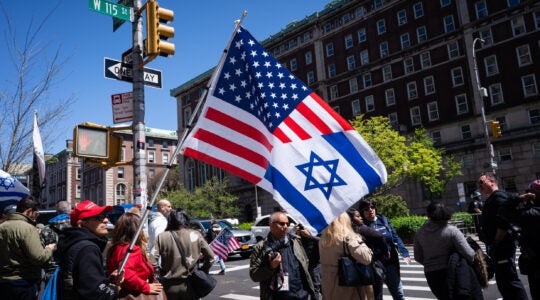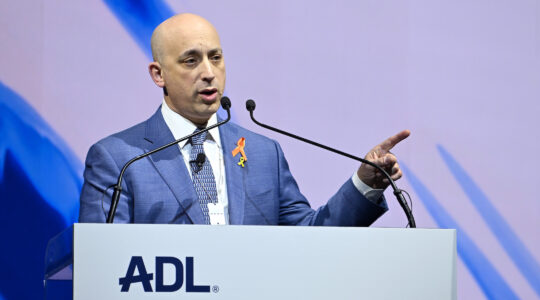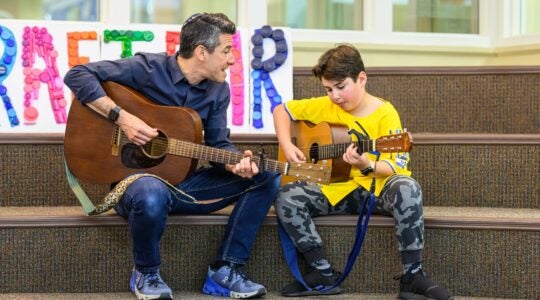The Avi Chai Foundation recently released its 2008-2009 census of Jewish day schools, a follow-up to the same survey it conducted in 1998 and 2003.
The report, conducted by Jewish education/sociology guru Marvin Schick, found that day schools have grown across the board over the past decade, with the most significant increases in both enrollment and the number of schools in the Chasidic and yeshiva worlds.
However, after a period of significant growth around the turn of the millennium, non-Orthodox day school enrollment is starting to drop — with a key factor being the severe erosion of the Conservative movement’s Solomon Schechter system.
The key findings:
- There are 228,174 day school students from pre-kindergarten through 12th grades, a 23,000-student increase from five years ago and a 43,000-student rise from 10 years ago.
- Chasidic schools increased by 56 percent and yeshiva schools by 34 percent.
- The past decade has seen a 5 percent increase in enrollment of students in non-Orthodox schools — but a 2.5 percent decrease in the past five years.
- The number of non-Orthodox community day schools increased from 75 to 98 over the past decade, and enrollment in those schools jumped by 40 percent.
- During the same period, however, the Conservative movement’s schools have experienced a 25 percent decrease in enrollment.
- Five out of six day schools are Orthodox, yet outside of New York and New Jersey, 47 percent of all day school students are non-Orthodox.
Though the numbers show an overall expansion of the reach of the day school system, Schick says in the explanation of the report that the system itself is in a rather fragile state. Despite the growth, he describes something of a bubble that was in danger of bursting — even before the recession there already was a significant tuition crisis.
And while the numbers he found certainly reflect some of the early fallout from the recession, Schick does not believe the true extent of hurt will be felt until later in 2009-10. Some schools operating in September 2008 that were surveyed did not make it through the year; others did not open this year.
Schick also is disheartened by the 2.5 percent decrease in non-Orthodox enrollment over the past five years. While it may not seem like a significant drop, he thinks it may become bigger over the next five years as "reliance on day schools as a vehicle to promote continuity among the non-Orthodox is downplayed."
Even the growth of the yeshiva school system is not without its issues, Schick says, as by 2018 there could be some 80,000 yeshiva day school students, which would come at significant cost.
Fundermentalist’s take: There really is a lot to unpack from the survey.
Clearly the haredi schools are growing at a faster pace than ever, while the interest of the non-Orthodox seems to be waning. Meanwhile, interest in day schools among committed Reform Jewish families is still growing, albeit slightly. It is the middle ground that seems to be eroding.
I asked Steven M. Cohen, the research professor at the main Reform seminary, the Hebrew Union College-Jewish Institute of Religion, what he thought.
"The large increase in Orthodox enrollment, coupled with stagnation in non-Orthodox enrollment, reflects several ongoing patterns. For years the Orthodox have been growing, through increased fertility and increased retention. Their numbers are significantly reduced only by way of massive aliyah," he wrote in an e-mail Thursday from London.
"In contrast, the number of Reform and Conservative Jews has been shrinking with growth of the least engaged, most marginal, and most episodic Jews. The middle of the Jewish identity spectrum has been giving way to the two poles of most traditional and fervent and most post-modern and tentative."
(Don’t feel dumb, it took me a few reads to get it also.)
Cohen essentially is saying that it’s no longer the Orthodox on one end and the Reform on the other. The Reform are the middle ground, and that they are committing huge dollars to day schools provides the evidence. It is the Jews with no affiliation that are the other pole, and perhaps the most important policy wise, as so many dollars are being spent on trying to figure out how to bring them back into the fold on their terms.
In the end, Cohen said, these trends will lead to greater diversity and choice within the Jewish community.
JTA has documented Jewish history in real-time for over a century. Keep our journalism strong by joining us in supporting independent, award-winning reporting.





